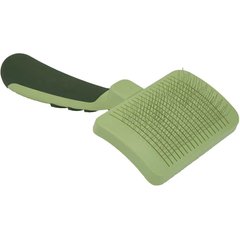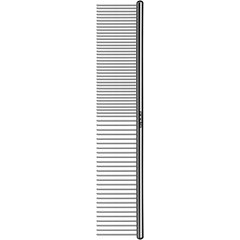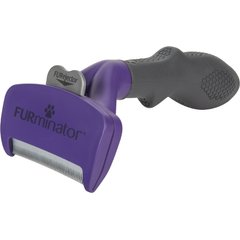15 Longhaired Cat Breeds
Nils Jacobi/iStock / Getty Images Plus via Getty Images
Longhaired cats come in a range of sizes, colors, and personalities. Cats with long hair often have an elegant or regal look, with features like a fluffy mane and tail, ear tufts, and tufts of fur between the toes. And while you might think that cat breeds with long hair will require extensive grooming, that’s not the case for all fluffy cats.
Here are some of the most popular and unique longhaired cats.
Breeds of Longhaired Cats
1. Persian

Known for a flat face and flowing locks, the Persian is one of the longest-haired cats. These felines have a mellow disposition and do best in a calm, relaxed household. The breed is known to be affectionate with family members but is sometimes reserved with strangers.
Persians come in a range of coat colors, including black, red, and cream. Blue and lilac coat colors are also unique options if you’re looking for a gray longhaired cat. As you would expect of such a fluffy cat breed, Persians need daily grooming to keep their coat and face free of debris and to prevent matting.
2. Himalayan
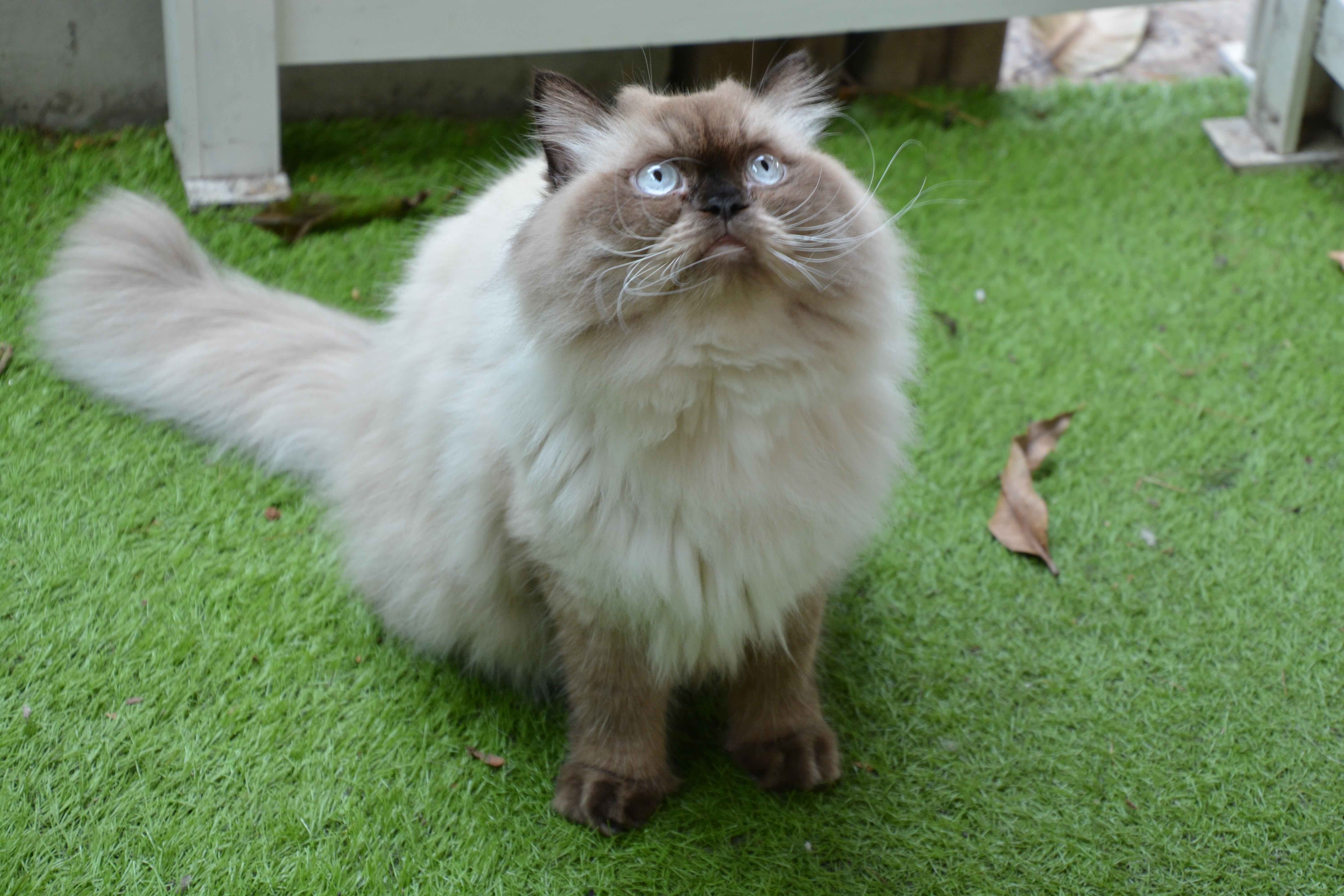
The Himalayan is an affectionate and playful longhaired cat breed created by crossing Persian and Siamese cats. You’ll recognize a Himalayan by the breed’s characteristic points—or areas of darker shading—on the ears, nose, feet, and tail.
The points contrast with the breed’s cream-colored coat and can be seal (black with a gold, red, or brown sheen), blue, lilac, chocolate, or flame (red-orange). These points can also be solid or patterned. The Himalayan’s coat can also vary from fine to wooly—but in either case, daily brushing is important.
3. LaPerm

One of the most unique types of longhaired cats is the curly-coated LaPerm. The coat has a distinct wavy appearance thanks to a natural gene mutation, and LaPerm cats can be longhaired or shorthaired.
The longhaired LaPerm has a medium-long coat that can be curly or wavy, with a springy, airy texture, according to the Cat Fanciers’ Association (CFA) breed standard. Despite having long fur, the breed is low-shedding and known for being affectionate and active.
4. Maine Coon
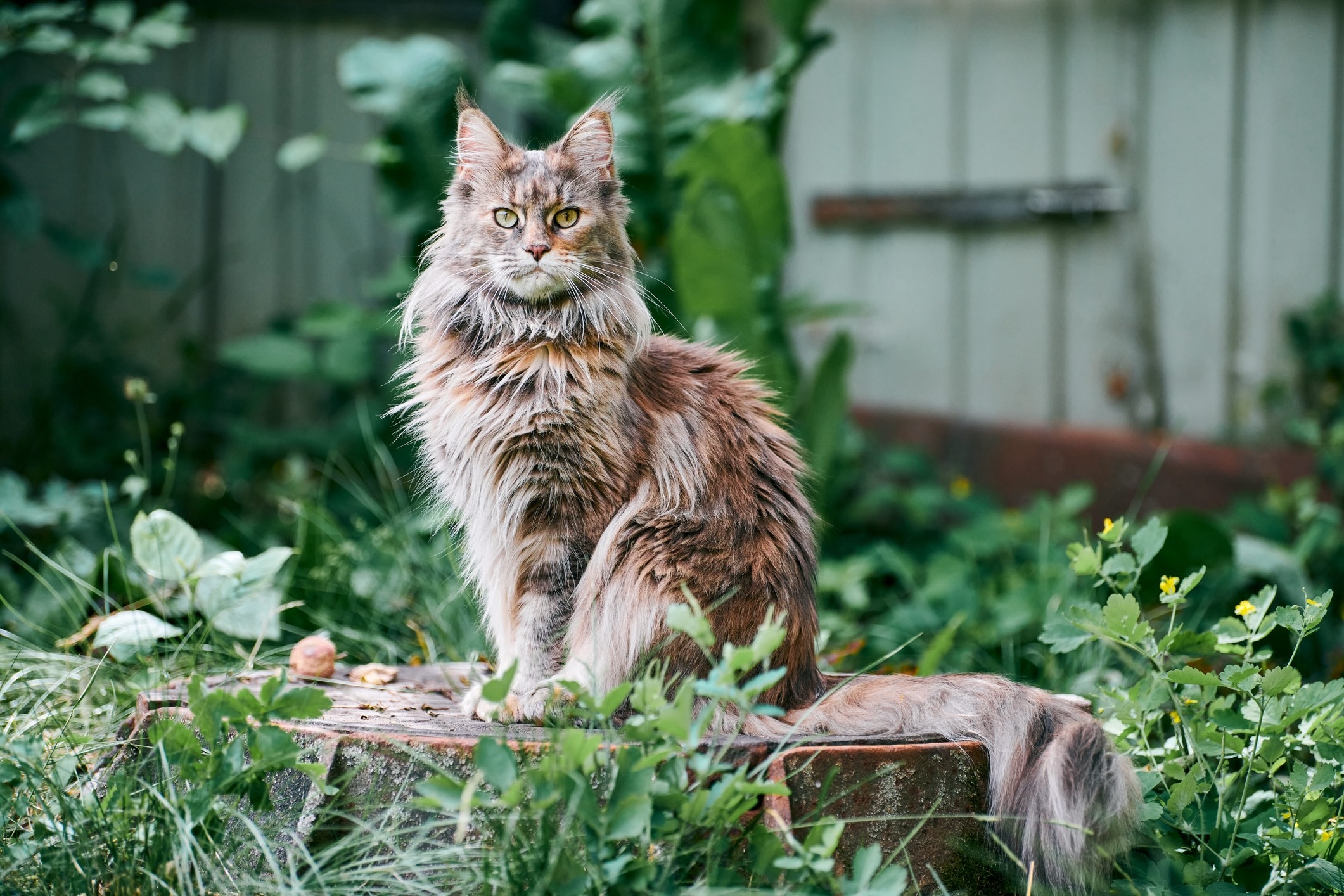
The Maine Coon’s large size, long coat, and supersized whiskers give this longhaired cat an impressive appearance. They make wonderful companions, and the breed has a reputation for being affectionate and intelligent, with many Maine Coon cats exhibiting almost dog-like traits.
One of the largest longhaired cat breeds, a full-grown Maine Coon can weigh as much as 25 pounds. Their thick, double coat of fur should be brushed at least a few times each week to maintain its appearance and remove tangles.
5. Norwegian Forest Cat
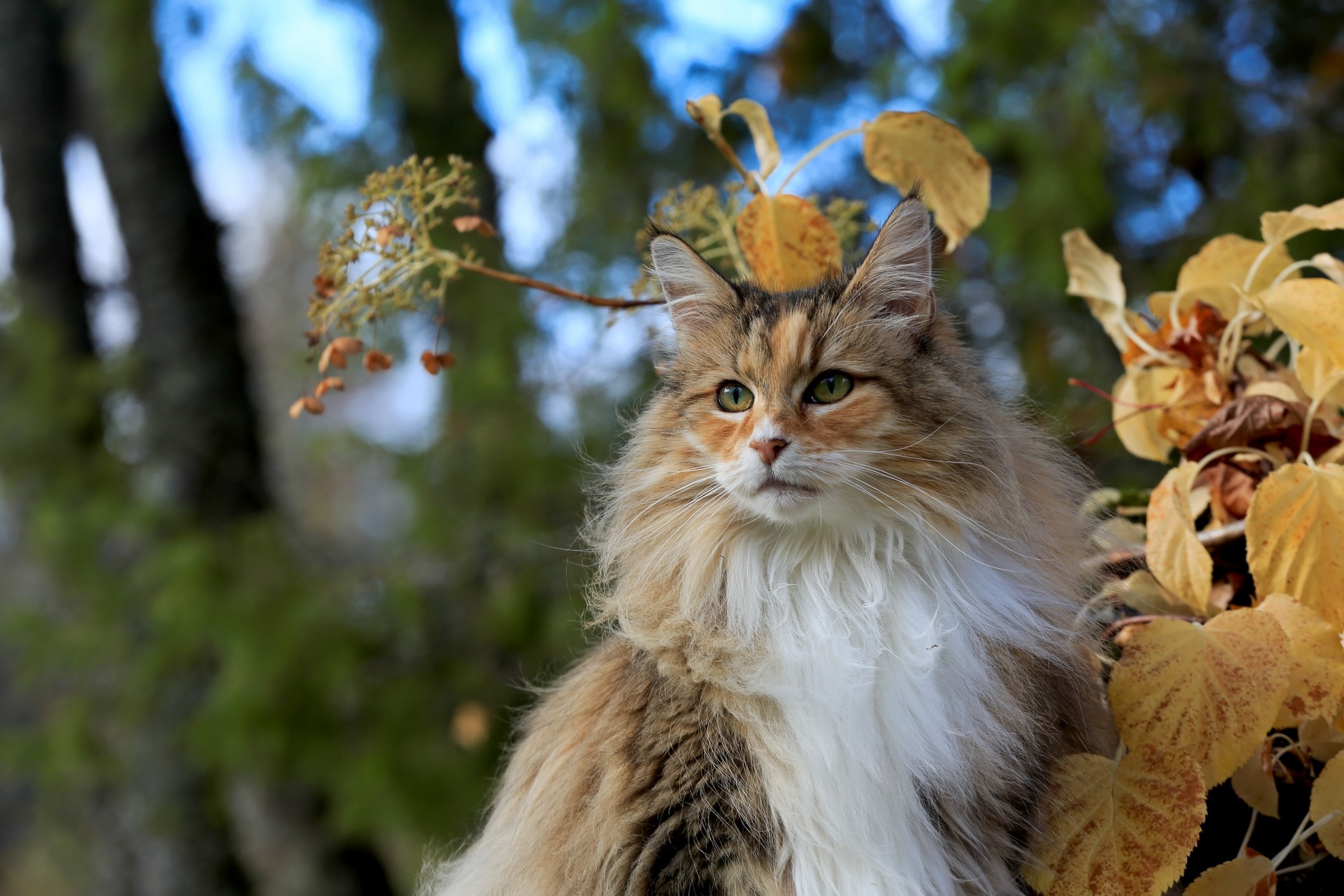
Another large and longhaired cat breed is the Norwegian Forest Cat. These felines have thick fur to protect against the harsh winter of their native Scandinavia and benefit from being brushed several times each week.
Twice a year, Norwegian Forest Cats shed their coat, which means you’ll need to ramp up your brushing routine to keep the flying fur under control. The sociable nature of this fluffy cat breed means that fitting in time for a grooming session is usually no problem, since these cats love to spend time with their human companions.
6. Ragdoll
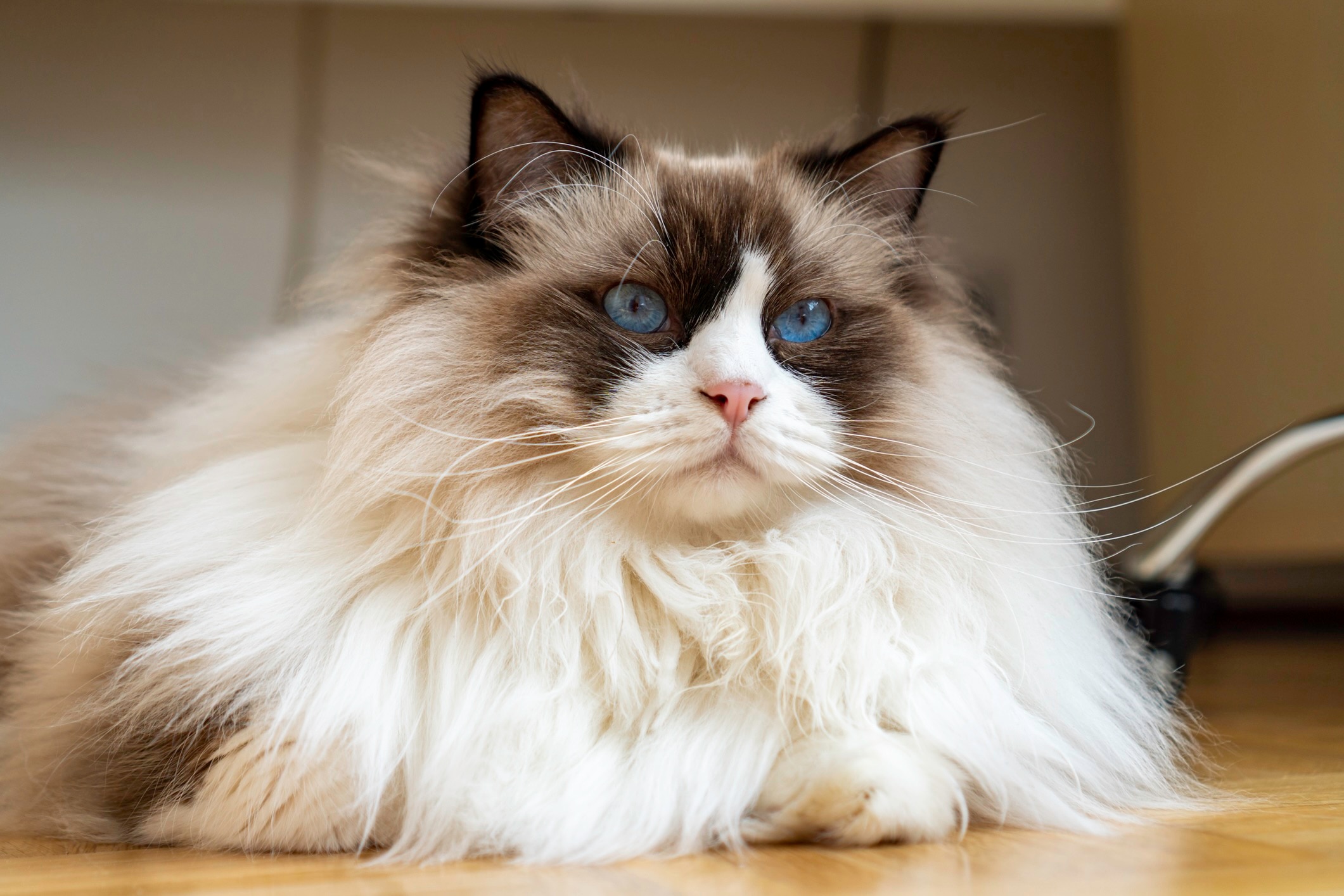
The Ragdoll is a fluffy breed best known for enjoying affection so much that they often go limp when being held or petted.
Ragdolls are one of the friendliest cat breeds and need to live in a home with other pets or with humans who are home a lot. But aside from their need for attention, these longhaired cats have fairly simple care requirements—grooming once or twice per week is usually enough to keep a Ragdoll healthy.
7. RagaMuffin
The RagaMuffin is closely related to the Ragdoll and is best known for having an affectionate demeanor and deep bond with family members. This longhaired cat breed has a soft and silky coat with a ruff around the neck and slightly longer fur on the belly.
The coat looks luxurious but is actually fairly low-maintenance. It’s usually sufficient to groom a RagaMuffin once a week with a comb.
8. Siberian
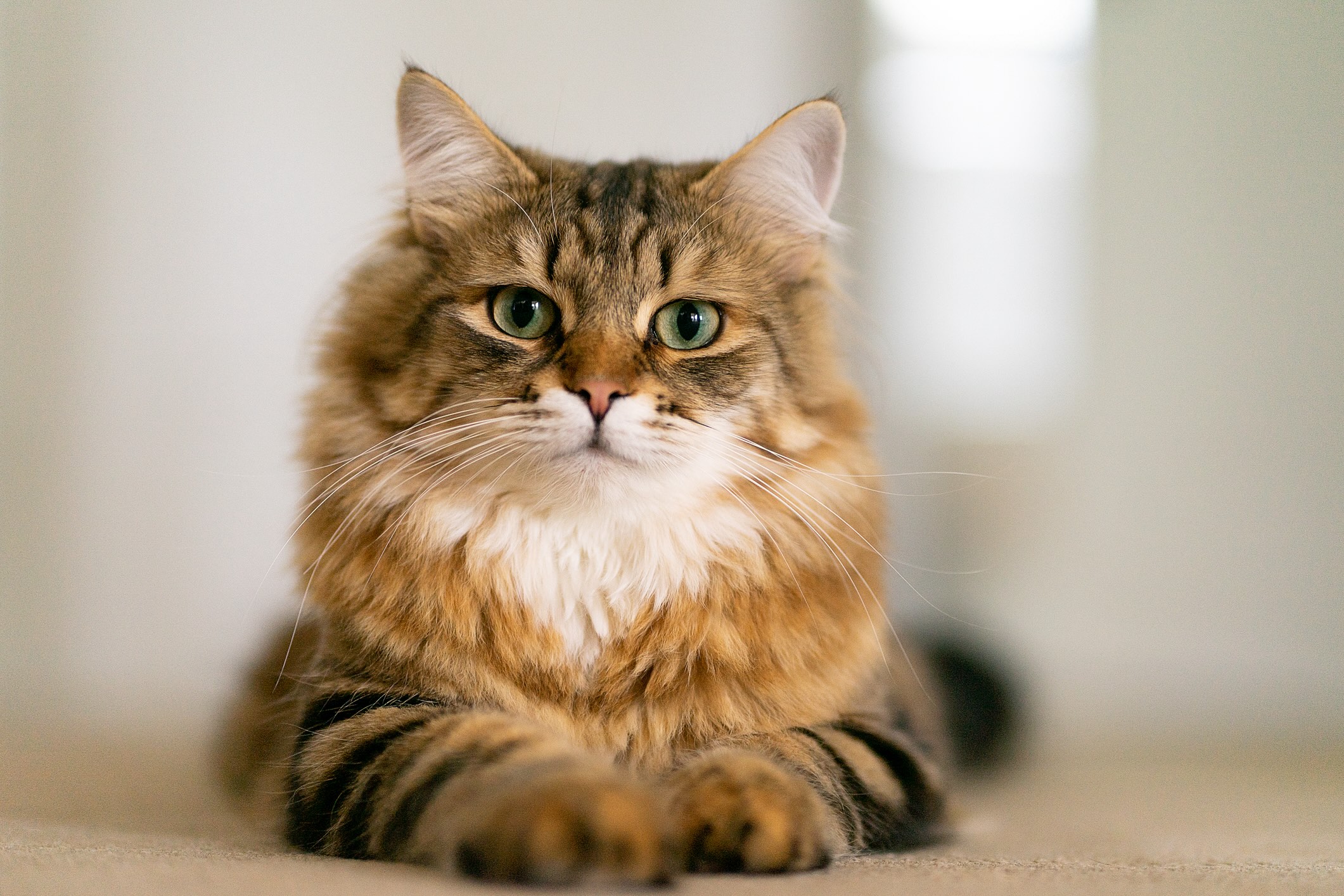
Compared to other cats with long hair, the Siberian stands out for having a triple coat made up of guard hair, awn hair, and an undercoat. And while that sounds like a lot more fur, the reality is that you’ll only need to groom a Siberian cat about once a week—until shedding season. Every spring and fall, you’ll need to brush your cat much more frequently (as much as daily) to keep up with the molting undercoat.
The Siberian is another famously friendly longhaired cat breed. The breed has a strong desire to spend time in your lap, and these cats are also intelligent, active, and trainable.
9. Selkirk Rex
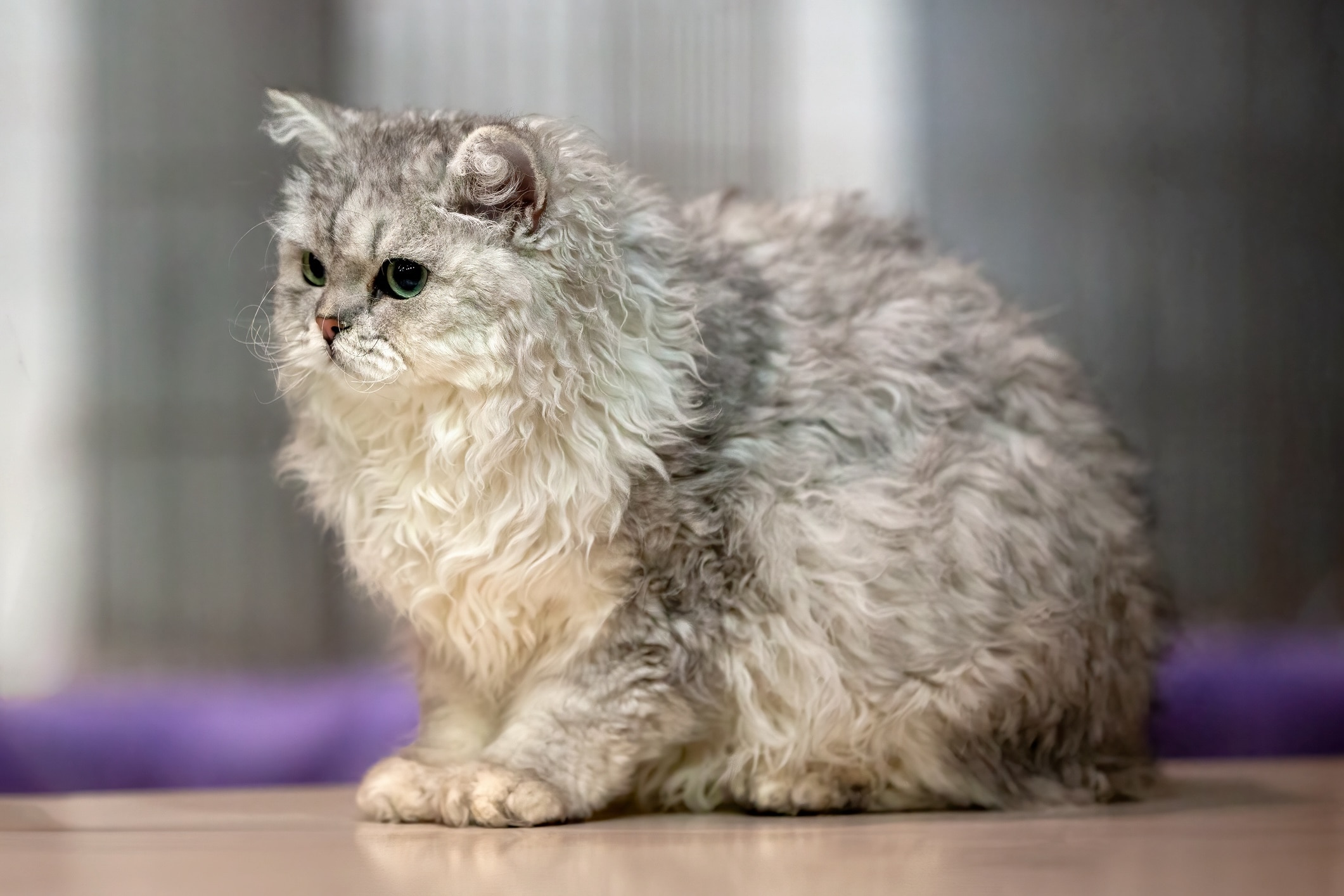
The Selkirk Rex has a curly coat (thanks to an inherited gene mutation) and long, fluffy fur—courtesy of Persian lineage in the breed’s development. Unlike many long-fur cat breeds, the Selkirk Rex shouldn’t be brushed too much or you might risk causing the coat to become frizzy.
These fluffy cats should also be bathed semi-regularly because they tend to develop oily skin. It’s best to establish a brushing and bathing routine early in your cat’s life to make the process easier.
10. American Bobtail
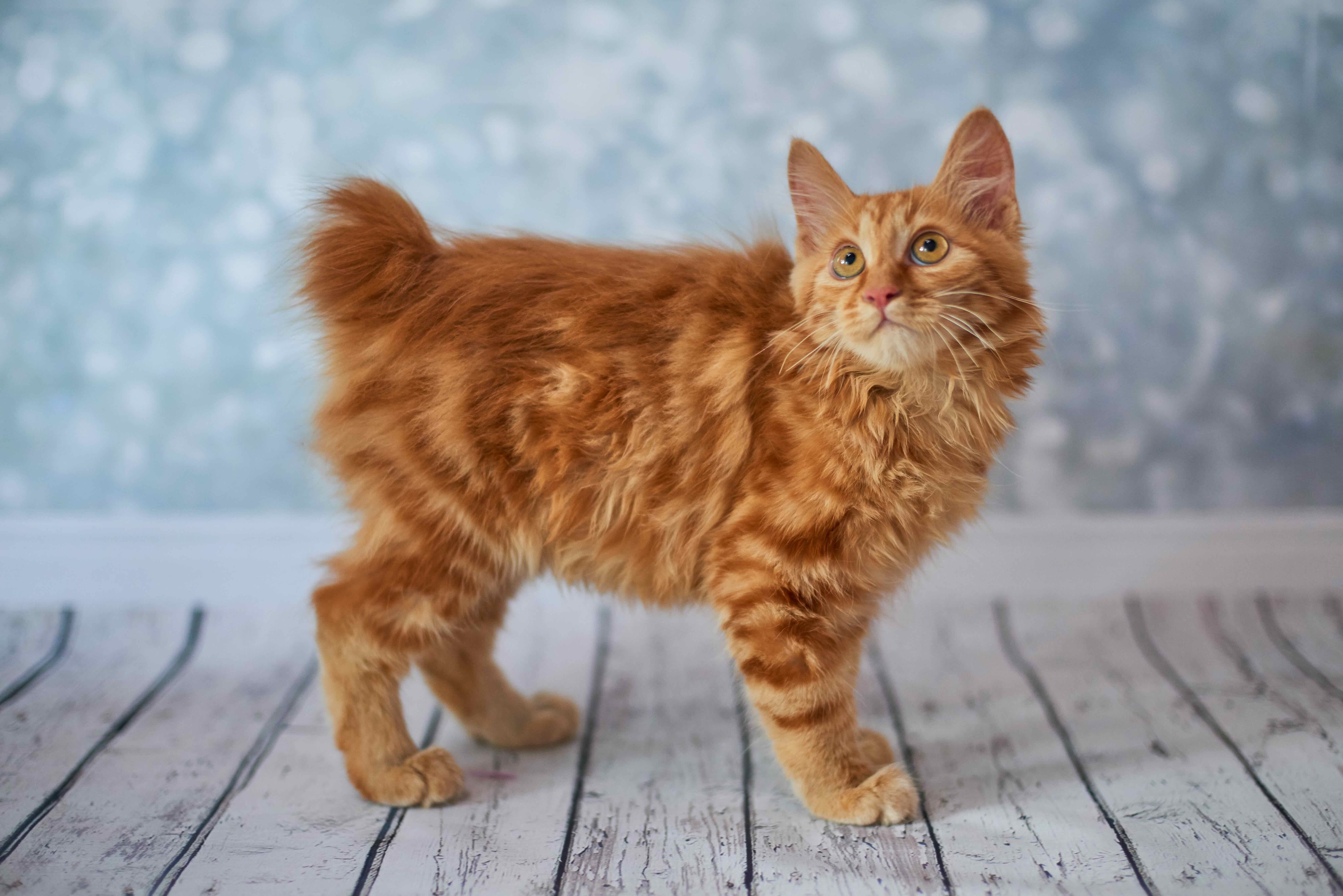
The American Bobtail has a shaggy, medium-long coat. The most recognizable feature of the breed is the shortened tail, which varies in length but can be as short as 1 inch in length.
According to The International Cat Association (TICA) breed standard, the American Bobtail can have any coat color—meaning you might have a fluffy brown cat or a longhaired orange cat. Regardless, this medium-sized cat breed is adaptable and affectionate, with the ability to learn tricks and play games.
11. Birman

With bright blue eyes and a white or cream coat accented by points on the face, tail, and legs, the Birman is an eye-catching longhaired cat breed.
And there’s good news for pet parents who are concerned about rigorous grooming requirements: The Birman’s long, silky coat is less prone to tangling and matting than some other fluffy breeds. That being said, brushing a Birman a few times each week will help to reduce shedding and the incidence of hairballs.
12. Japanese Bobtail
The longhaired Japanese Bobtail has a tail that extends no more than 3 inches and a medium-to-long coat that’s silky, with no obvious undercoat. The smooth, fine coat is easy to keep under control with regular weekly brushing. You’ll find a rainbow of colors for this longhaired cat breed, including solid shades along with bi-color and tri-color coats.
The Japanese Bobtail is very interactive with human companions, often vocalizing for attention and boldly befriending newcomers.
13. Pixiebob
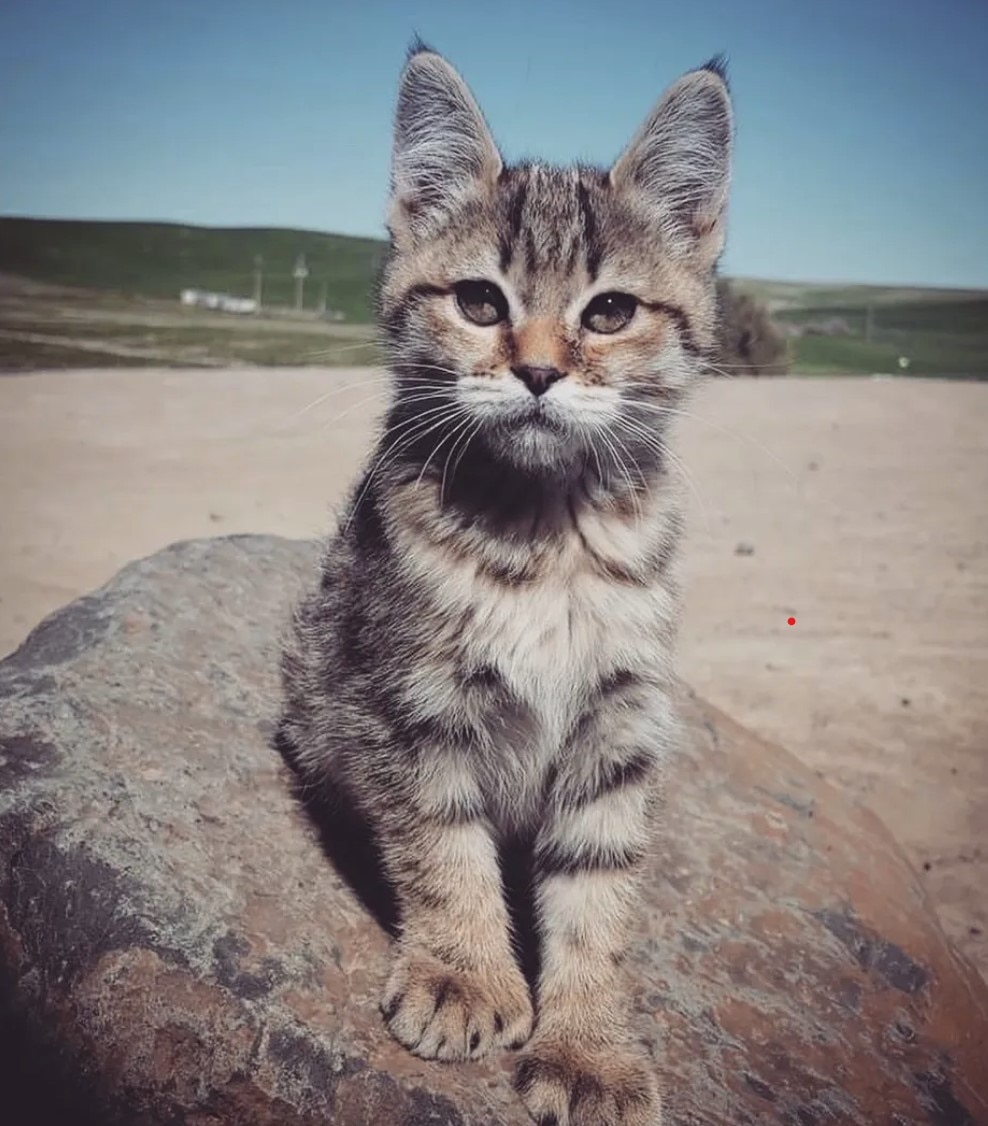
The Pixiebob is bred to resemble the wild North American bobcat. The breed standard recognizes shorthaired and longhaired coat types and describes the facial hair of both as full and bushy.
Longhaired Pixiebob cats have a soft coat that’s about 2 inches long and lies close to the body. Although this breed might look like a smaller version of a wild bobcat, Pixiebobs have a relaxed personality and a friendly nature that makes them excellent house cats.
14. Turkish Angora

The Turkish Angora has a smooth, silky coat that is as beautiful as it is low-maintenance. Without an undercoat, there’s less chance of matting—although you should still brush this longhaired cat breed a few times each week.
Compared to some other cat breeds with long hair, the Turkish Angora isn’t known to be super cuddly. But they enjoy active play with people and other pets, and they tend to be very vocal, too.
15. Turkish Van
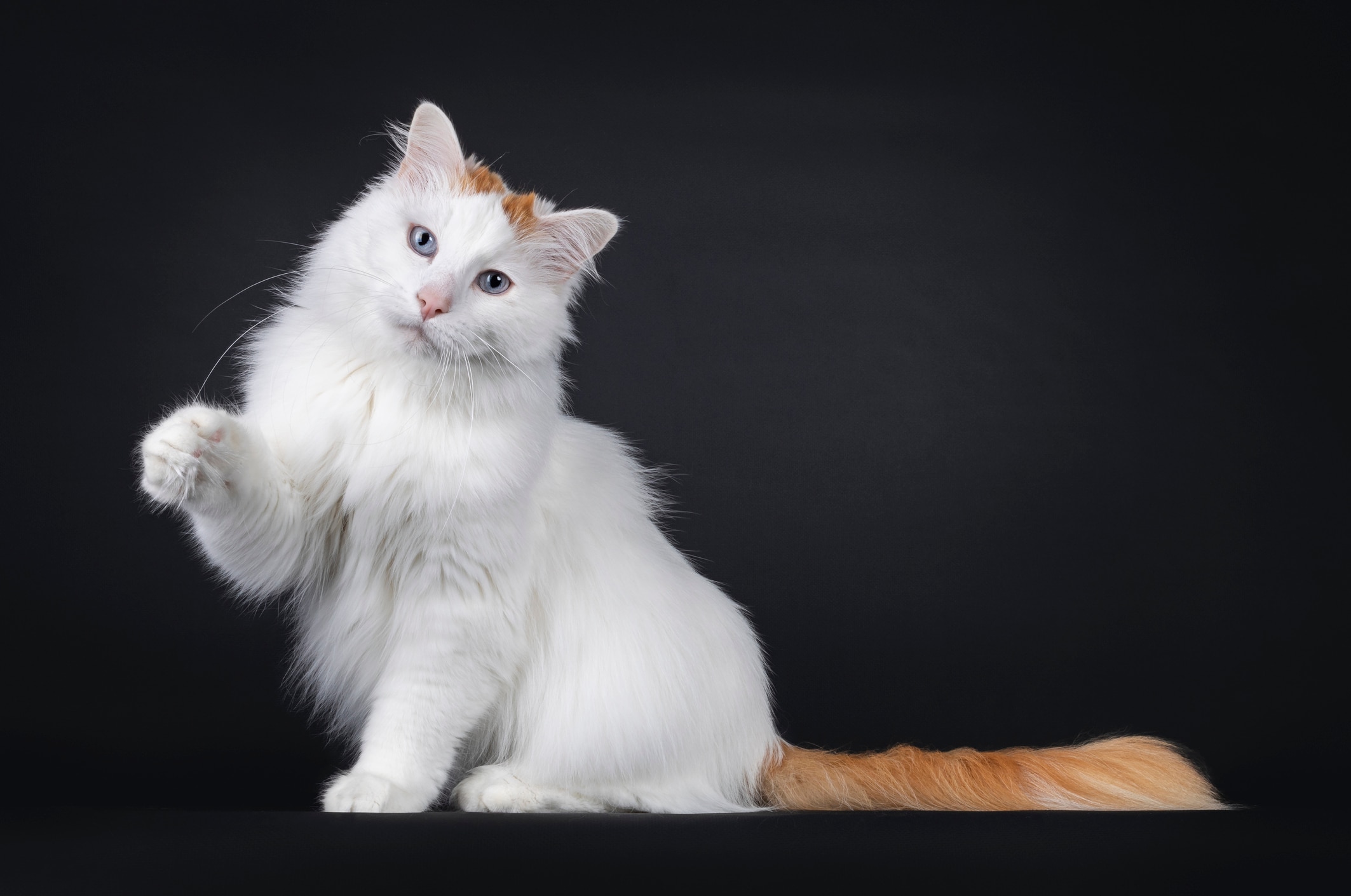
Another low-maintenance longhaired cat breed is the Turkish Van. Interestingly, these cats are born with a short coat that gradually grows in by the time the cat is 3–5 years old.
Even after maturity, you’ll notice that the Turkish Van’s coat changes throughout the year, exhibiting a shorter coat in the summer and a thick, long coat in the winter months. Year-round, however, the Turkish Van has a full, bushy tail and ear tufts.
Caring for Longhaired Cat Breeds
Caring for longhaired cats is largely the same as caring for any cat—they need proper nutrition, mental stimulation, and the basic necessities like a litter box and cat toys. But longhaired cat breeds often require a substantial amount of grooming.
The most frequent care requirement for cats with long hair is regular brushing and routine nail clipping. Invest in a comb and brush for catching loose fur, removing dander, and smoothing the coat.
Recommended Products
It’s important to learn the proper techniques for brushing a cat and to make the experience positive by offering your cat plenty of affection and treats throughout the grooming session. But be careful not to brush your cat for too long or too often, as this can cause frizzy, broken hairs.
If you run into a serious mat that can’t be quickly and easily removed, it’s best to let a professional groomer take care of the issue. In fact, some longhaired cat breeds might benefit from a regular visit to the groomer. That’s especially true for very fluffy cat breeds, like the Persian or Siberian. A cat groomer can give the coat a thorough brushing or even give your cat a trim to make at-home grooming easier.

